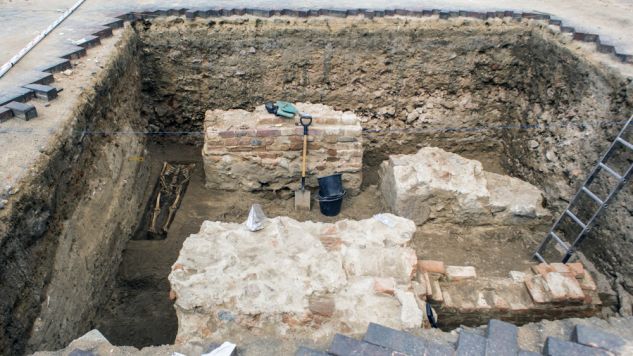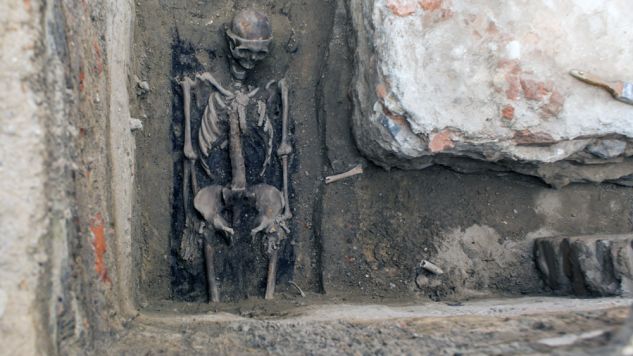you can also say that the Poznan was in the vanguard of modern medicine – said Friday the head of the excavations, Dr. Marcin Ignaczak.
Trepanation work medic Joseph Ostrich?
The skeleton was discovered in the second layer of burials within the collegiate church of St. Mary Magdalene. – These graves are very old. Earlier stratifications indicated that there is a seventeenth-century burials, and these are necessarily even older – said the scientist.

The skeleton was found in the archaeological layer that can come even from the sixteenth century (Fig. PAP / Bartosz Jankowski)
– There are many indications that the chronology of the skeleton is the sixteenth, half of the seventeenth century. We suspect that there might be a modern times, however, when the collegiate buried among one of the most famous Poznan medics Joseph Ostrich and – for the time being carefully – we suspect that even he could perform an autopsy on the dead man’s – added Dr. Ignaczak. The deceased must have been something significant
The discovery is remarkable also for this reason that autopsies were carried out at that time rather nameless dead. – The skeleton was discovered in a coffin inside the Collegiate Church, which suggests that he was buried there someone significant. At the moment just answer why just in the dead man was carried out this operation, is our biggest problem – said the archaeologist.

The researchers will try to examine the DNA of the deceased (Fig. PAP / Bartosz Jankowski)
He added that at the beginning of next week should be known more extensive expertise of anthropologists. – After further investigation we will also learn more about this man; about his state of health, illnesses, about how he looked. We will try, of course, examine DNA – said Dr. Ignaczak.
The excavations at Poznan square collegiate lasts from mid-April. Completion of the work is tentatively scheduled for July this year.
No comments:
Post a Comment